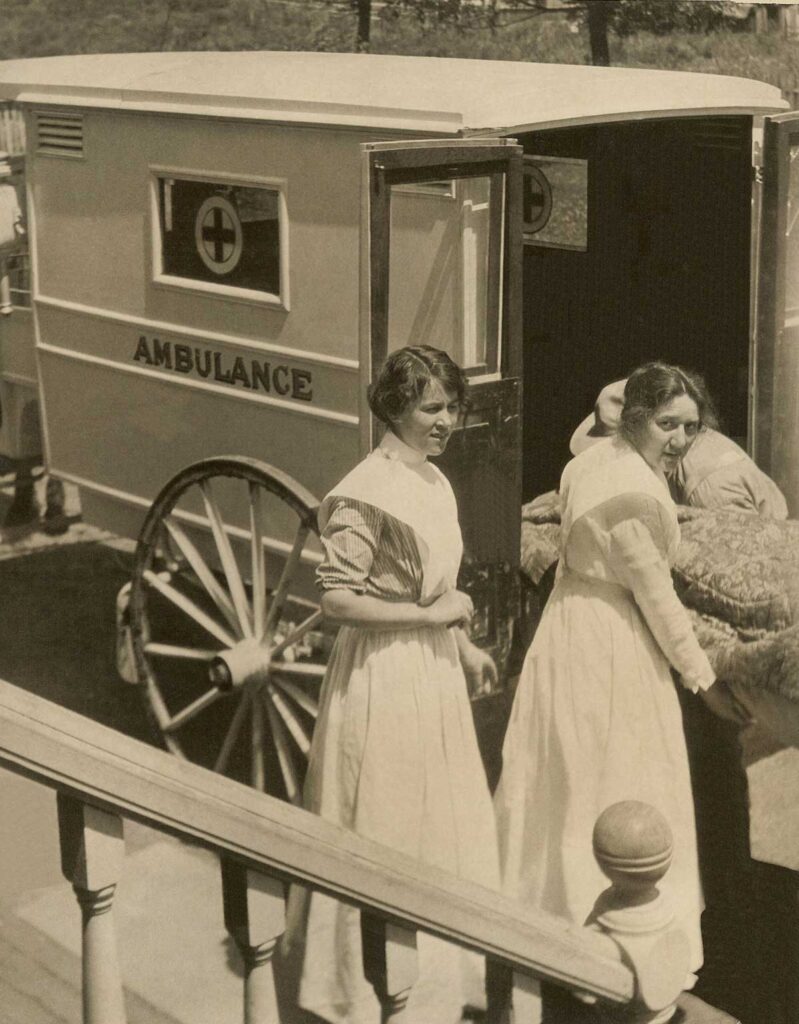In 1897, the year after Utah achieved statehood, the state legislature approved funds to build a “State Miner’s Hospital” in Park City. For political and financial reasons, local mine owners and some residents were not eager for a new hospital to materialize. Politically conservative-minded Parkites and mine owners were wary of unions’ influence on laborers. Additionally, some mine owners had vested interests in Salt Lake City hospitals and did not want to disrupt those relationships. It would be seven years before Miners’ Hospital would open its doors.
Organized labor arrived in Park City in 1901 with the formation of Local No. 144 of the Western Federation of Miners. Reliable healthcare was chief among miners’ concerns: miners regularly sought care from local doctors and herbalists to augment home remedies, but serious issues requiring hospitalization led to an arduous (and sometimes lethal) journey to Salt Lake City by horseback or stagecoach.
Miners’ Hospital received broad support when it finally opened its doors in 1904. Although the majority of the hospital’s patients were miners, the hospital also served their families and other residents of the local community. Hospital records reviewed by the Utah Historical Quarterly indicate 500 patients were treated at the hospital in its first year – a patient census that would double in just seven years’ time. Historical records suggest that the hospital capably met the medical needs of its community.
In 1919, a woman named Kittie Witherow Berry was admitted to Miners’ Hospital. In addition to being a patient, Kittie served as a hospital matron, a term ascribed to the most senior nurses on staff at Miners’ Hospital. Although not seriously ill, Kittie’s condition required surgery. She was 30 years old when she underwent a “successful” operation performed at Miners’ Hospital – one that she did not survive. The Park Record described her as a popular matron who herself became a patient for whom an untimely death befell.

Credit: Park City Historical Society & Museum, Joan Rowe Collection
Kittie and her family had moved to Park City from Massachusetts when she was 14 years old; when she was 18, she married William J. Berry. A member of the auxiliaries of the Women of Woodcraft and the Ladies of the Maccabees as well as the sister-in-law of Sam H. Raddon (whose father Sam “Dad” Raddon was the longtime owner/operator of the Park Record), Kittie was prominent in social and lodge circles.
In her obituary, the Park Record stated that “seldom has death called one so universally loved and respected.” So popular was Kittie that the local lodges of the Benevolent Protective Order of the Elks and the Knights of Columbus, two orders to which her widower belonged, “took entire charge of arrangements for the family and rendered every service possible.”
Strife between mine owners and the labor union led the hospital to close in 1919. It reopened in 1920 under the ownership of the Sisters of Holy Cross and subsequently under the ownership of several individual physicians.
Ultimately, the closure of local mines and resulting population decline, coupled with the construction of a new highway to Salt Lake City, clinched its obsolescence as a viable medical center. The building was sold to condominium developers in 1956 and would be repurposed again and again, serving as a hostel and a bar. The building became city property and was relocated in 1979 (from its original location near Park City Mountain ski base) to 1354 Park Avenue where it served as the city library from 1980 to 1993. Today, Miners Hospital operates as a community center for group functions and is listed on the National Register of Historic Places.